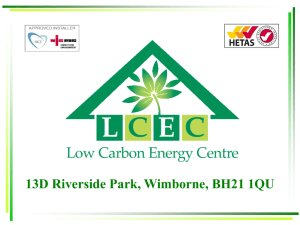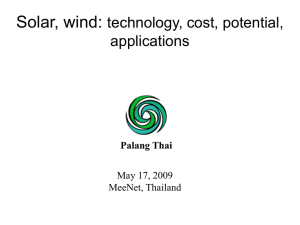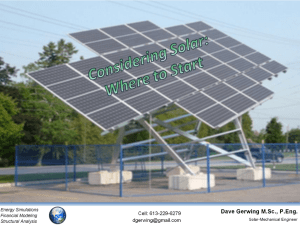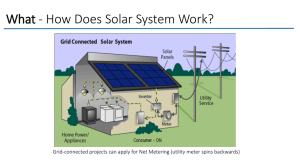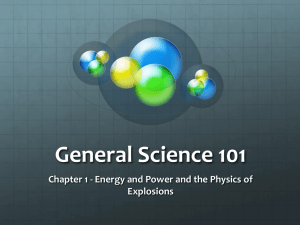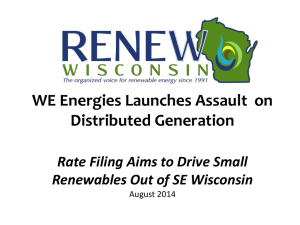Is Wind Power Competitive?
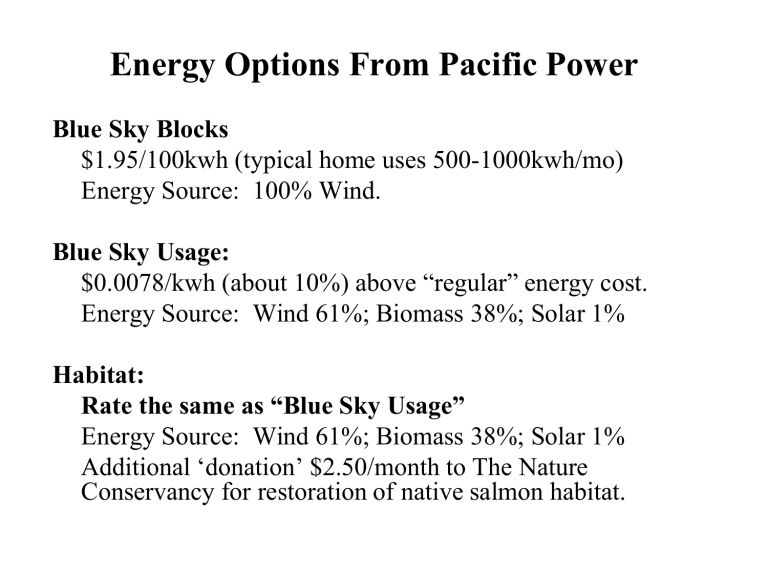
Energy Options From Pacific Power
Blue Sky Blocks
$1.95/100kwh (typical home uses 500-1000kwh/mo)
Energy Source: 100% Wind.
Blue Sky Usage:
$0.0078/kwh (about 10%) above “regular” energy cost.
Energy Source: Wind 61%; Biomass 38%; Solar 1%
Habitat:
Rate the same as “Blue Sky Usage”
Energy Source: Wind 61%; Biomass 38%; Solar 1%
Additional ‘donation’ $2.50/month to The Nature
Conservancy for restoration of native salmon habitat.
Get Help With Energy Consumption
Energy Trust of Oregon: Click here for Website
Help: Free home energy audit.
Cash rebates for solar water heating; Solar electric panels, more energy efficient heating
State of Oregon Help:
Tax credits to buy energy efficient appliances, solar electric panels and other things.
Click here for Energy Tax Credits
Local Electric Utility Help:
Electricity rebates and others for Energy Star purchases (and others—always check)
Wind Power
And out in our very own Morrow County*
Thanks to Morrow County student, Mary Rietmann for this photo
Why Wind Power?
• Is Wind Power Competitive?
US Dept. of Energy “Levelized Costs of new generation facilities in 2019”
– Hydropower 8.5 cents/kwh
– New Wind 8.0 cents/kwh
– New Coal 9.5 cents/kwh
– New Natural Gas 6 – 10 cents/kwh
– New Solar PV 13 cents/kwh
– New Geothermal 4.8 cents/kwh
– New Nuclear Highly Variable
Wind Power Advantages
• It is perpetual
– As long as the wind blows, you have energy inputs
Wind Power Advantages
• It is perpetual
• Wind speed increases during day as demand increases.
Wind Power Advantages
• It is perpetual
• Wind speed increases during day as demand increases
• Turbines inexpensive and quick to install
– 2MW models cost about $2.5 million
– Often less than a year from permit application to operating wind farm.
Wind Power Advantages
• It is perpetual
• Wind speed increases during day as demand increases
• Turbines inexpensive and quick to install
• Reduced Environmental Impacts
– At least the operations. There are no free lunches—it takes resources to make these things and recycling at the end of their life.
Wind Power Advantages
• It is perpetual
• Wind speed increases during day as demand increases
• Turbines inexpensive and quick to install
• Reduced environmental impacts
• Price stability
– The wind is “free” it costs the same this year as the next, and the next, and the next.
Wind Power Advantages (con’t)
• Reduced dependence on fossil fuel
Wind Power Advantages (con’t)
• Reduced dependence on fossil fuel
• More jobs per unit of energy
Wind Power Advantages (con’t)
• Reduced dependence on fossil fuel
• More jobs per unit of energy
• Long-term income to ranchers and farmers
Wind Power Disadvantages
• Wind must blow 2/3rds of the time
Wind Power Disadvantages
• Wind must blow 2/3rds of the time
• Need 15-18 mph constant wind
Wind Power Disadvantages
• Wind must blow 2/3rds of the time
• Need 15-18 mph constant wind
• Often requires new infrastructure (powerlines)
Wind Power Disadvantages
• Wind must blow 2/3rds of the time
• Need 15-18 mph constant wind
• Often requires new infrastructure (powerlines)
• Chops birds and bats
Wind Power Disadvantages
• Wind must blow 2/3rds of the time
• Need 15-18 mph constant wind
• Often requires new infrastructure (powerlines)
• Chops birds
• Noisy
Wind Power Disadvantages
• Wind must blow 2/3rds of the time
• Need 15-18 mph constant wind
• Chops birds
• Often requires new infrastructure (powerlines)
• Noisy
• Ugly?? Maybe more Surreal
Global Wind Energy (Gigawatts) 2013--The Big Five
60
50
40
30
20
10
0
100
90
80
70
2013
2012
2011
2010
2009
2008
China US Germany Spain India
150
100
50
0
U.S. vs World Wind Power (in Gigawatts) 2013
350
300
250
200
U.S.
World
1990 1995 2000 2005 2010 2012 2013
How a Wind Turbine Works
The Netherlands, 1992
Anglesey, Wales, 2003
Corsica, 2005
Tehachapi Pass, California, 2001
Bird Blender
????
Megawatt ????
• A “Megawatt of “Installed Capacity” of
Wind Generated Electricity is enough to power about 270 homes.
• Currently in the US we are generating enough wind energy to power about 16.7
• million homes.
• This means that 82 million tons of CO
2 not go into the atmosphere last year.
did
NREL Installed Wind Energy
Vansycle Ridge Wind Farm;
Northern Oregon
Current Wind Power
• Currently meets almost 5% of US needs
• Installed capacity increases:
– 50% in 2008
– 39% in 2009
– 5% in 2010
– 31% in 2011
– 60% in 2012
– 20% in 2013
– 9% in 2014
– 16% in 2015 (projected)
Potential Wind E. in NW
• --STATE--
• Oregon
• Washington
• Idaho
• Montana
• --MEGAWATTS--
• 4,900
• 3,700
• 8,300
• 116,000
Oregon’s Power Future
2% of state suitable for Wind Generation
(USDOE)
Could Oregon meet its needs with renewable energy—Hydro, Wind, Waves, Solar: both photovoltaic and concentrated solar? Perhaps if coupled with an increase in efficiency of existing buildings, etc.
Coal vs Wind
•
•
•
Coal:
• * A 60 watt Incandescent light burning for non-stop for one year requires 427 pounds of coal.
• * Converting that coal to energy produces:
3 lbs of sulfur dioxide (acid rain base)
3 lbs of nitrogen oxide (smog and acid rain base)
1112 pounds of carbon dioxide (greenhouse gas)
Wind:
• * A single 2 MW wind turbine would only have to spin for
50 minutes to power that light bulb for a year.
Incandescent versus Compact Fluorescent Bulbs
• * A single 2 MW wind turbine would have to spin for 12 minutes to power an equivalent size compact fluorescent bulb for a year and about 8 minutes for a LED bulb.
Wind Power “Battery”
• Since wind doesn’t always blow at any given site it always requires a backup, often coal, hydro, gas.
• Creative Solution: Underground sequestration of compressed air. Costs 6.5 cents/kWh to produce off peak; sell at 10 cents/kWh peak—
50
40
30
20
10
0
80
70
60
China
Global Wind Energy 2012*
The big 5
*(In Gigawatts)
US Germany Spain India
2012
2011
2010
2009
2008
U.S. vs World Wind Power 2012*
*( In Gigawatts )
250
200
150
100
50
0
1990 1995 2000 2005 2010 2012
U.S.
World
